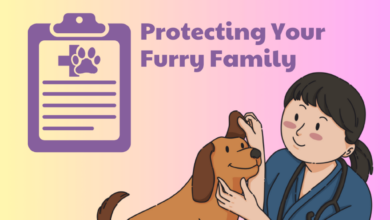Protect Your Purrfect Pal: The Essential Guide to Pet Health Insurance for Cats
Is your feline friend your whole world? Are you worried about the rising costs of veterinary care? Pet health insurance for cats is a lifesaver for many cat owners, providing peace of mind and financial protection in case of unexpected accidents or illnesses. With so many different plans and providers available, finding the right insurance for your kitty can be overwhelming. But don’t worry, this article will guide you through everything you need to know to ensure your furry companion is covered for life’s unexpected expenses.
Contents
- 1 1. Understanding Pet Health Insurance for Cats
- 2 2. Benefits of Pet Health Insurance
- 3 3. Types of Pet Health Insurance Policies
- 4 4. Coverage Options
- 5 5. Choosing the Right Policy
- 6 6. How to Get Pet Health Insurance
- 7 7. Filing a Claim
- 8 8. Exclusions and Limitations
- 9 9. Cost of Pet Health Insurance
- 10 10. Conclusion
- 11 Covered Conditions and Exclusions
- 12 Coverage Options for Cat Health Insurance
- 13 Thank You for Reading!
1. Understanding Pet Health Insurance for Cats
Pet health insurance is a financial safety net that helps cover the costs of veterinary care for your cat. It can provide peace of mind knowing that you can afford to give your furry friend the best possible care, even in the event of an unexpected illness or injury.
2. Benefits of Pet Health Insurance
Pet health insurance offers several benefits, including:
– Financial protection: It can help you avoid the high costs of veterinary care, which can easily reach thousands of dollars.
– Peace of mind: It gives you peace of mind knowing that you can afford to give your cat the best possible care.
– Preventative care: Some policies cover preventative care, such as vaccinations and dental cleanings, which can help keep your cat healthy and prevent future health problems.
– Flexibility: You can choose a plan that fits your budget and your cat’s needs.
3. Types of Pet Health Insurance Policies
There are two main types of pet health insurance policies:
– Accident-only policies: These policies cover only accidents, such as injuries from car accidents or falls.
– Comprehensive policies: These policies cover a wider range of illnesses and injuries, including accidents, illnesses, and chronic conditions.
4. Coverage Options
Pet health insurance policies can cover a variety of services, including:
– Medical expenses: This includes the cost of veterinary exams, treatments, surgeries, and medications.
– Hospitalization: This includes the cost of staying in a veterinary hospital.
– Preventative care: This includes the cost of vaccinations, dental cleanings, and other preventative measures.
– Alternative therapies: Some policies cover alternative therapies, such as acupuncture and chiropractic care.
5. Choosing the Right Policy
When choosing a pet health insurance policy, consider the following factors:
– Your cat’s age and health: Older cats and cats with pre-existing conditions may require more coverage.
– Your budget: Pet health insurance can be expensive, so it’s important to choose a plan that fits your budget.
– The coverage you need: Consider the types of services you want to be covered.
– The deductible: The deductible is the amount you pay before your insurance coverage kicks in.
6. How to Get Pet Health Insurance
You can get pet health insurance from a variety of sources, including:
– Pet insurance companies: There are many pet insurance companies that offer a variety of plans.
– Veterinarians: Some veterinarians offer pet health insurance plans to their clients.
– Online brokers: You can also purchase pet health insurance online from an insurance broker.
7. Filing a Claim
If your cat needs veterinary care, you will need to file a claim with your pet health insurance company. The claim process is usually simple and straightforward. You will need to provide documentation of your cat’s medical expenses, and your insurance company will reimburse you for the covered expenses.
8. Exclusions and Limitations
All pet health insurance policies have exclusions and limitations. Common exclusions include:
– Pre-existing conditions
– Routine care, such as grooming and nail trims
– Cosmetic procedures
– Experimental treatments
9. Cost of Pet Health Insurance
The cost of pet health insurance varies depending on the factors discussed above. The average cost of pet health insurance is around $30 to $50 per month.
10. Conclusion
Pet health insurance can provide peace of mind and financial protection for cat owners. By understanding the different types of policies and coverage options available, you can choose a plan that meets your cat’s needs and your budget.
Covered Conditions and Exclusions
Accidents and Injuries
Pet health insurance for cats typically covers the costs of veterinary care for accidents and injuries, such as:
- Broken bones
- Lacerations
- Bites
- Poisoning
Illnesses
Many pet health insurance policies also cover common illnesses, including:
- Respiratory infections
- Urinary tract infections
- Gastrointestinal problems
- Diabetes
- Cancer
Diagnostic Tests and Imaging
Pet health insurance can help cover the costs of diagnostic tests and imaging, such as:
- Blood tests
- X-rays
- Ultrasounds
- MRIs
Emergency Care
Pet health insurance often includes coverage for emergency care, such as:
- Surgery
- Hospitalization
- Intensive care
Preventive Care
Some pet health insurance policies offer limited coverage for preventive care, such as:
- Checkups
- Vaccinations
- Dental cleanings
Exclusions
Pet health insurance policies typically have certain exclusions, such as:
- Pre-existing conditions
- Cosmetic procedures
- Elective treatments
- Dental work
- Breeding expenses
It’s important to carefully read the policy document to ensure that you understand what is and is not covered.
Coverage Options for Cat Health Insurance
Pet health insurance plans offer varying levels of coverage, allowing you to customize your policy to suit your cat’s individual needs.
Accident and Illness Coverage:
This is the most basic type of pet health insurance. It covers unexpected events such as injuries, illnesses, and emergency care. The coverage typically includes expenses such as vet visits, hospitalization, surgery, and prescription medications.
Wellness Coverage:
Wellness coverage supplements accident and illness insurance by reimbursing you for preventative care expenses. This includes routine checkups, vaccinations, spaying or neutering, and dental care. Some plans may also cover grooming and training.
Prescription Drug Coverage:
Prescription drug coverage is essential for cats with ongoing health conditions that require medication. It typically covers a wide range of prescription drugs, both generic and brand-name. The coverage may vary depending on the plan and the type of medication.
Dental Coverage:
Dental coverage is crucial for maintaining your cat’s oral health. It covers procedures such as teeth cleaning, extractions, and periodontal disease treatment. Dental expenses can be substantial, so this coverage is highly recommended.
Alternative Therapies Coverage:
Some pet health insurance plans offer coverage for alternative therapies such as acupuncture, chiropractic care, and herbal remedies. These therapies can be beneficial for cats with chronic conditions or as a complement to traditional veterinary care.
Thank You for Reading!
Hey there, pet lovers! Thanks for taking the time to check out this claws-ome guide to cat health insurance. We know fur babies are like family, and keeping them healthy and happy is purr-amount. We hope you found this article helpful in making an informed decision for your furry friend.
Be sure to check back soon for more paw-sitive pet health tips and tail-wagging content. Until then, give your kitty a big belly rub and a gentle meow from the Cat Health Insurance Team!








